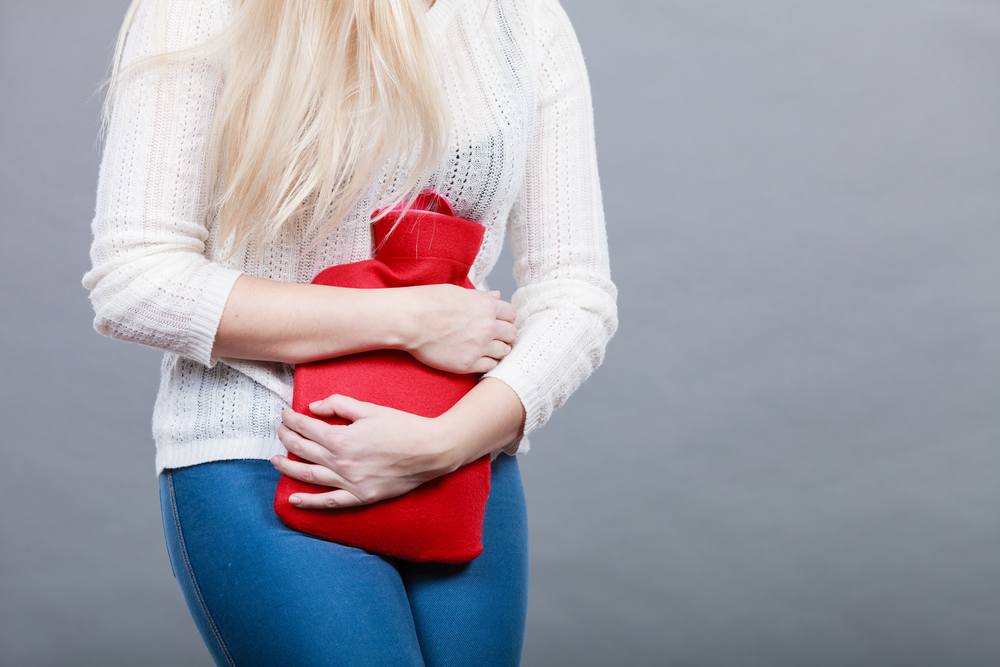Relationships June 29, 2017
Because there have been too many misdiagnoses.


Around 176 million women worldwide suffer from endometriosis, but millions more have probably never even heard of it.
Thankfully, though, a few celebrities have started opening up about the realities of this condition.
Just last year, singer/songwriter Halsey talked about living with endometriosis. She shared her experience with endometriosis on Twitter and let fans who might also have it know that she’s keeping them in her thoughts.
And for those of you who may not know what it is at all, you may not understand the seriousness of the condition. But don’t worry because ENTITY’s got you covered.
Here’s what we know about endometriosis and how you can tell if you have it.
Endometriosis is a health problem that only occurs in women; it’s when the uterine tissue grows outside of the uterus. This condition usually occurs in tissues that hold the uterus in place, ovaries, fallopian tubes and the outer surface of the uterus.
Typically, the uterine tissue thickens and sheds as blood every month. Usually, this blood sheds through a period, but in people with endometriosis, the blood has nowhere to escape. This causes inflammation, pain and scar tissue.
There isn’t a known cause for the disorder and, unfortunately, it can happen to any woman. Although, research does say that women who have relatives with endometriosis are more likely to also have it.
And as previously stated, it’s so common of a problem that about 176 million women suffer from it worldwide.
Symptoms and levels of pain from this condition differ in every woman, but the most common endometriosis symptom is pelvic pain. It can also cause scar tissue and adhesions to develop, which can cause internal organs to fuse together.
While most women experience pain during the first few days of their period, women with endometriosis can feel terrible throughout their entire period. This causes severe cramps that can hinder many women from accomplishing daily tasks.
But on top of the cramping and body strain, endometriosis also causes periods that last longer than seven days, heavy menstrual flow, bowel and urinary disorders, nausea or vomiting, pain during intercourse and infertility.
Currently, there isn’t a test for the disorder, which means you can’t have your blood, urine or saliva checked for it.
You can, however, get a pelvic exam. During this exam, you doctor will feel the areas in your pelvis for cysts that could have formed due to the endometriosis. Another test is an ultrasound, which allows doctors to take photos of your inner organs to identify endometriosis. But, so far, the most effective method to identify the condition is a laparoscopy. During a laparoscopy, your doctor will be able to look inside your abdomen for signs of the condition.
While there is no cure, there are multiple ways to decrease the pain the disorder causes. Doctors typically do this by shrinking the lining of the uterus.
How can you do this, exactly? One way is an oral contraceptive pill. This ends your period to eliminate monthly bleeding. Women can also take progestins and progesterone to help with the symptoms. Lastly, there are drugs such as GnRH-analogues, Danazol and Mirena that have been used to target endometriosis in women.
But if you don’t want to treat the condition orally, the most effective treatment is a laparoscopic surgery. Though it’s usually used to diagnose endometriosis, this surgery can also treat the condition. It’s done by removing any visible endometriosis implants or scar tissue that’s causing pain or infertility.
Unfortunately though, since this condition only affects women, there aren’t a lot of energy and resources put into finding a cure for it. And because women tend to stay quiet about conditions surrounding their periods, a lot of women go undiagnosed.
To avoid this, if you find yourself experiencing any of these symptoms, don’t be afraid to schedule an appointment with your doctor.
We’re women and we bleed once a month while having to go on with our daily lives, which makes us strong as hell. There shouldn’t be any shame surrounding our periods and the problems that come with them.